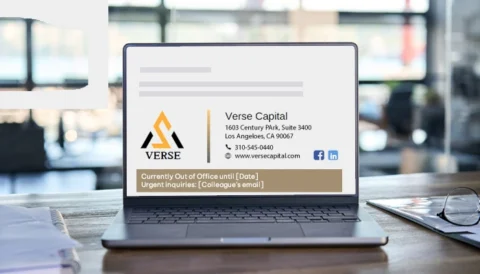Email is the number 1 business communication channel. So whether you are emailing a colleague, a client, or your boss, you need to make sure that you come across as both professional and articulate.

So if you find yourself slipping into slang when you type out an email, or you think your email tone could do with a little polishing, the below blog is exactly what you need. Keep reading to discover seven simple etiquette tips designed to help you transform your emails from sloppy to sleek.
1. Always check before you send
It sounds obvious but we’ve all clicked ‘send’ and then started worrying. Even if you have to send hundreds of emails a day (the average employee sends over 1,000 a month!), you need to make sure you are finding the time to read through what you have written. Not only will this allow you to check for any spelling or grammatical errors, but it will also enable you to see if you have included anything that is inappropriate – which could prove costly to your business and to you personally.
So think very carefully about the words and tone you use before you click send!
2. Make the most of your signature
Although you may not think that your email signature is a big deal, you may be surprised at just how much it can say about you and your professional abilities. For example, an email signature that contains all the relevant information such as your job title, contact details and company brand logo – as well as direct links to your social media profiles and website – enables recipients to contact you easily and find out more about your company.
You also need to make sure that your email signature displays correctly on all devices – from desktops to smartphones – otherwise you risk damaging your professional brand image. So always choose an email signature generator that’s mobile optimized.
Nothing signs off an email more professionally than a well-designed, on-brand signature.

3. Utilize templates
If you struggle to reply to all the emails that you are sent in a day, then it can be a good idea to create templates for your most frequently used responses. This enables you to respond to all your emails in a timely and professional manner without making you feel overwhelmed.
Start by thinking of the top five most received emails that you get, and then write a standard response to each one. If you are worried about templates sounding impersonal, you can always tweak each response slightly to provide a more bespoke, personalized reply.
4. Streamline your responses
While you don’t want to fall into the habit of writing emails in the same way you would write a text, you should aim to keep them clear and concise. Include bullet points, use short sentences and paragraphs and avoid flowery language that is not needed.
In a nutshell, you want your emails to be easy to scan and consume, as your colleagues and clients are probably just as busy as you are.
5. Choose the right subject line
Often an aspect of writing an email that is overlooked, if you tend to add a subject line hastily just before clicking send, you could be setting yourself up for failure. Ideally, you want a subject line that is concise but also one that grabs the attention of the recipient.
Typically, people will first open and read an email depending on who sent it. The next factor is the subject line. This means that you need to ensure that your chosen words interest the reader and get them to open your email.
To help focus your email, write your subject line first, put the most important words at the start and cut out any unnecessary ones to increase clarity. And remember to re-read your subject line before you press ‘send’!
6. Think about your audience
The tone of your email will be highly dependent on who you are communicating with. For example, an email to a colleague is likely to be worded quite differently than one that is for your boss or a new client.
If you are emailing someone you have never met, you must always ensure that your email is polished and steer clear of overly informal language, jokes and emojis. However, if you are emailing someone you have known for a while and that you have a good relationship with, then obviously you can use a friendlier, more casual tone.
7. Respect office hours
Although you may work outside of the traditional 9-5, that doesn’t mean that everyone else does. Therefore, you should think about the timings of the emails that you send. This is particularly true if you are pitching to a new client.
Avoid sending emails late in the evening, at weekends, or when a person is on leave, as this can put you on a wrong footing before your correspondence even takes off. Instead, be courteous when sending an email and respect the recipient’s time.
What to include in a formal email
- A clear and concise subject line
- A professional greeting
- A formal introduction
- The main body of the email
- A conclusion to confirm or prompt action
- Your email signature
If you need help creating professional email signatures for your business, please don’t hesitate to get in touch with our professional email signature experts.
From customizing professional email signature templates to creating bespoke branded signature designs for your company, our professional business email signature software is just what you need.

Laszlo Ujj | VP Client Solutions
Connect with Laszlo on LinkedIn



